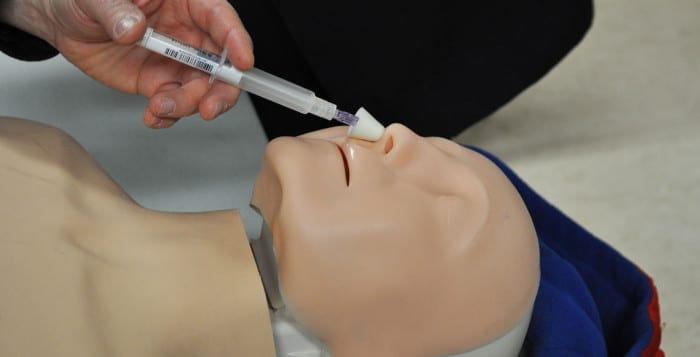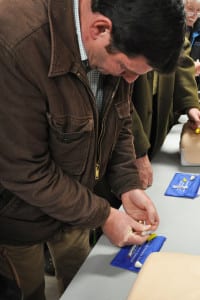The American Revolution might be a thing of the past but it’s made a mark in Long Island’s present.
After three and a half centuries the historic Brewster House in East Setauket is still standing thanks to the Ward Melville Heritage Organization.
On Monday Dec. 7 at 3 p.m. Brookhaven Supervisor Ed Romaine (R) and Town Councilwoman Valerie Cartright (D-Port Jefferson Station) and the WMHO celebrated the house’s 350th anniversary.
President of the WMHO Gloria Rocchio said nine generations of Brewsters lived in the house after the town sold the house to Nethaniel Brewster on Oct. 24, 1665. She added that the house may be older than 350 years as it was already built when the town sold the property.
WMHO acquired the property in 1948 after John Ward Melville purchased the house from Jennie E. Smith and Robert Elderkin — they were the last members of the Brewster family to own the home. Additions were made to the home before Melville purchased the property — the home was transformed from a one-room cottage to its current multiple-room structure. Nineteen years after purchasing the home, Melville began restoring the dilapidated house.
The Brewster House was as a tavern and general store during the American Revolution. Members of the Brewster family resided in the upstairs portion of the home. At the time, Joseph Brewster entertained British Troops at the home. Joseph Brewster’s cousin Caleb supposedly frequented the house often during the revolution — he was a member of George Washington’s Culper Spy Ring alongside the Roe brothers. The Roe brothers resided in Port Jefferson, which was once called Drowned Meadow.
In light of the house’s long history, Cartright read the original deed that transferred the property to the Town of Brookhaven during the celebration. The town originally acquired the property before WMHO obtained the house many years ago. Both Romaine and Cartright said the house is the oldest building in Brookhaven. It’s age and it’s history made the house worth preserving.
“You don’t want to take these historical homes and modernize them. You want to keep the historical culture,” Cartright said. “Ward Melville Heritage Organization understands the importance of keeping the historical significance of these homes so that’s why we’re happy to work with them.”
Ward Melville established the WMHO on Dec. 29 1939. It was initially known as The Stony Brook Community Fund. While Melville established the organization with the goal of rehabilitating Stony Brook Village and merge history with the area’s natural beauty, the organization has since expanded on his vision.
Currently they continue to spread awareness about Long Island’s history and help to preserve historic sites like the Brewster House.
Romaine added that preserving parts of the community’s history would help the community’s future.
“We have to understand that we’re part of a continuum of history. To do that we’ve got to look back as well as look forward because by looking back we get a clear vision of how to look forward.”






















